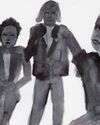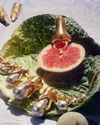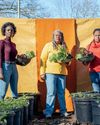Theres more to Havana than meets the eye.

Although the concerns and conflicting theories of travelling to Cuba may be deterrents to some, this largest island in the Caribbean remains an alluring destination for many. The harsh reality of the political and economic climates that its locals live in paints a stark contrast to the pictures shared on social media of shiny vintage cars and fancy rooftop bars.
My first impression of Havana, the capital of Cuba, was that I had time-travelled back to the ’70s or ’80s. As my mind adjusted (and confirmed that I was indeed in 2017) itself, I let my gaze take in the timeworn yet vibrant-coloured colonial buildings that line the streets, vintage Coco taxis (bright yellow, egg-shaped rickshaws) that populate the roads and the general bustle around me. Reinforcing that sense of having stepped back into another era was the realisation that internet connectivity was largely limited to Wi-Fi parks and areas populated by tourists.
Beneath its vibrant façade, however, one discovers the “real truths” of living as a local. Frequent electricity cuts are a daily occurrence, aside from crammed living conditions and complete disconnectivity from the world outside. This is the city that, in 2017, was battered by Hurricane Irma, which left a trail of destruction that sadly added to the island’s landscape of collapsed buildings that have given way over time owing to poor infrastructure and a lack of maintenance.
This story is from the October 2018 edition of T Singapore: The New York Times Style Magazine.
Start your 7-day Magzter GOLD free trial to access thousands of curated premium stories, and 9,000+ magazines and newspapers.
Already a subscriber ? Sign In
This story is from the October 2018 edition of T Singapore: The New York Times Style Magazine.
Start your 7-day Magzter GOLD free trial to access thousands of curated premium stories, and 9,000+ magazines and newspapers.
Already a subscriber? Sign In

Look At Us
As public memorials face a public reckoning, there’s still too little thought paid to how women are represented — as bodies and as selves.

Two New Jewellery Collections Find Their Inspiration In The Human Anatomy
Two new jewellery collections find their inspiration in the human anatomy.

She For She
We speak to three women in Singapore who are trying to improve the lives of women — and all other gender identities — through their work.
Over The Rainbow
How the bright colours and lively prints created by illustrator Donald Robertson brought the latest Weekend Max Mara Flutterflies capsule collection to life.

What Is Love?
The artist Hank Willis Thomas discusses his partnership with the Japanese fashion label Sacai and the idea of fashion in the context of the art world.

The Luxury Hotel For New Mums
Singapore’s first luxury confinement facility, Kai Suites, aims to provide much more than plush beds and 24-hour infant care: It wants to help mothers with their mental and emotional wellbeing as well.

Who Gets To Eat?
As recent food movements have focused on buying local or organic, a deeper and different conversation is happening among America’s food activists: one that demands not just better meals for everyone but a dismantling of the structures that have failed to nourish us all along.

Reimagining The Future Of Fashion
What do women want from their clothes and accessories, and does luxury still have a place in this post-pandemic era? The iconic designer Alber Elbaz thinks he has the answers with his new label, AZ Factory.

A Holiday At Home
Once seen as the less exciting alternative to an exotic destination holiday, the staycation takes on new importance.
All Dressed Up, Nowhere To Go
Chinese supermodel He Sui talks about the unseen pressures of being an international star, being a trailblazer for East Asian models in the fashion world, and why, at the end of the day, she is content with being known as just a regular girl from Wenzhou.